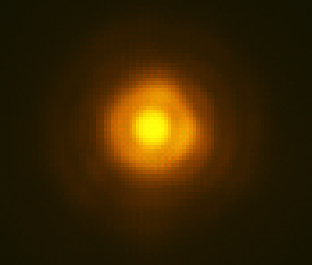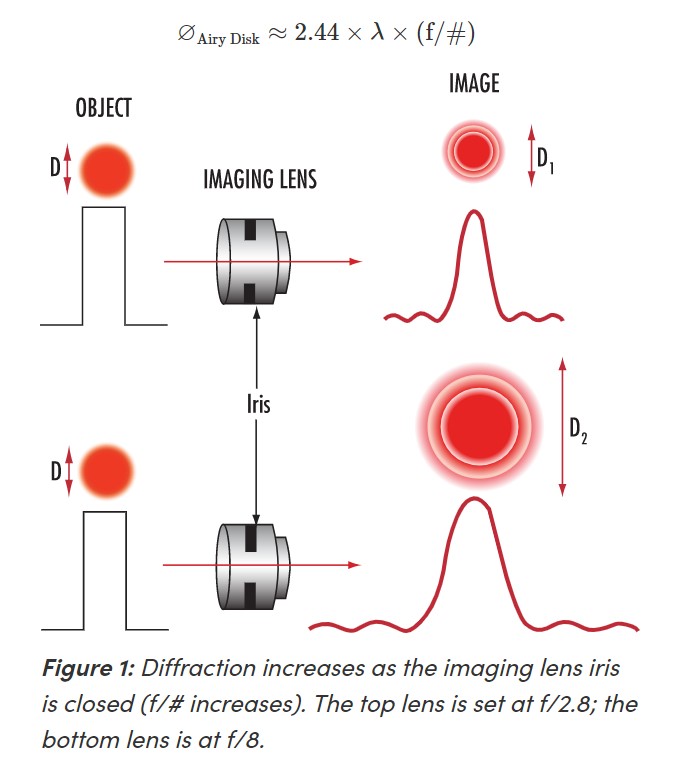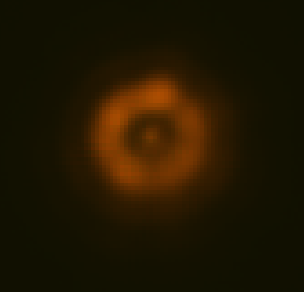Collimating an SCT: the C14 magic

How tough is it to collimate a C14 SCT? Well, in my case, it’s pretty tough where I live, as the place is an “aerological washing machine” and I had never seen the Airy disk of a well focused star. Well, until now!
This is how an unfocused star looks like with the tube horizontal on an early summer night! What you’re looking at is not a gross optical train defect, but the internal heat plume around the baffle tube as the primary mirror cools down… You would be right in thinking that this particular SCT is not going to be collimated anytime soon… I wrote about thermal equilibrium here: Achieving SCT thermal equilibrium and it shows it takes as much as 5 hours on a hot day/cool night to see internal turbulence disappear. Which is why, I wont even try to collimate first thing in the evening. So, how are you going to do it, might you ask? Well, it’s bad enough having to compose with internal turbulence to have to deal with atmospheric turbulence as well, so I use an artificial star and wait till the early morning.

Because a C14 has such a long focal length, the star has to be pretty far away to be able to achieve focus. It’s not something you can do in your bathroom (unless you have an especially large one!). Typically, I’ll set my 50μM star uphill about 60 M away (that’s 180 Ft). Because the Airy disk is so small, I use my televue “Big Barlow” in between the camera and the OTA. I also use my ASI662MC camera because it has got fine 2.9μM pixels. Finally, I use a red filter because the diffraction pattern of red light is larger than other wavelength:

In the “old days”, collimation would be done visually with an eyepiece to give about 3 times primary mirror size (in mm) magnification. So, for a C14, it is about 1000x. This is a bit awkward to say the least as you can’t look through the eyepiece and adjust secondary screws at the same time… Things get even worst and sporty if you’re pointing a star straight up. One of the advantages to using a camera is that you can look at the PC screen while adjusting the screws. The main advantage though, is that cameras allows you to record short videos of the star, stack the video image and cancel/smooth out turbulence, internal or external.
In my case, I used Firecapture to capture .SER videos and Autostakkert to stack it.There are plenty of videos on Youtube , both good and bad showing SCT secondary mirror screws adjustments so I won’t bother with the adjusment part here. In most cases, the operator uses a unfocused star and in some cases, the scope is clearly still not collimated at the end of the operation… No. My main concern here is to show how to see the scope actual Airy disk.
At this point, I’ll start by recording a short video of a slightly unfocused star as it is easier to see any gross misalignment:
Once fed through autostakkert, it leads through a nice unfocused star image. Even though the video is taken from an artificial star 70M away, you can see how much it wiggles and jiggles from turbulence (internal or external). This is the result of my earlier efforts of recollimating the scope after a service and cleaning at the Celestron importer workshop here in France, and a long drive back which did not help with collimation I guess. In any case, this does not look too bad at all. Ok, time to focus the star and see what gives…

It still moves about quite alot, but, on average, notice we can clearly see the star and the diffraction rings. A quick run through Autostakkert leads to this:

What we can see is that the scope is perfectly adjusted. To scale the picture, keep in mind that the actual diameter of the first ring on the camera sensor actually is 14μM. We can actually compare the Airy disk with the simulation from the Haso optical bench report:

It does look very simular, and it is a nice confirmation that the C14 is adjusted properly and will operate to the maximum resolution allowed by local atmospheric conditions and tube temperature. A word of warning though. This measurement was done with the telescope aimed at about 10° angle. So, mirror flop might make diffraction pattern slightly different with the tube aimed at the sky. Regardless, collimation mechanism is pretty solid on a C14 EdgeHD so secondary mirror position should be the same with the tube vertical.